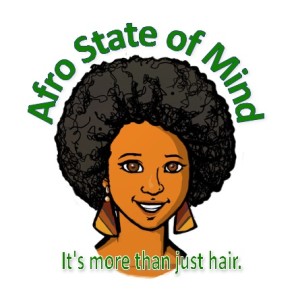“Santa just IS White. Santa is what he is, kids…Jesus was a White man too.”
With these statement, Fox News anchor Megan Kelly kicked off a conversation that she was not prepared to manage. Kelly was responding to a Slate article written by Aisha Harris in which Harris argued that Santa should be depicted as a penguin. Harris’ argument was grounded in the fact that seeing the imaginary Santa clause only depicted as a White man can cause children of color to feel a sense of insecurity and shame.
Kelly and her Fox News team took umbrage at the suggestion that Santa—the imaginary figure that we only tend to discuss seriously with children under the age of seven—could be anything but White. She also found it necessary to declare as fact that not only was Santa White, but Jesus—who lived in a land where White people did not live—was also White. Despite the fact that Jesus is described in the Bible as having hair like wool (which means he was probably a Type 4C) and skin like bronze…
Personally, I’m more concerned with the level of discomfort that Kelly displayed at the mere suggestion that Santa could be anything but White. Kelly’s discomfort was a perfect example of how White privilege operates when couched in a racially constructed default value system.
Default Values
Your default value system is the measuring point from which all other things are measured and evaluated. And in case it wasn’t clear from Kelly’s outrage at the idea of a Black Santa or Jesus, the American value system has a default setting that says everything and everyone is White. Unless you are told otherwise.
Unfortunately this means that we tend to think about our world and our interactions with it in a White paradigm by default. This is why you can watch the news and unless the news story either mentions race or uses pseudonyms for race like “urban” or “poverty”, one can safely assume the story involves White people. The same is true of books we read and the shows we watch.
Here’s an example: Let’s say you are reading a mystery novel. Unless you are told otherwise, by default most of us are programmed to see the characters in the book as White. It doesn’t matter if race is an issue in the story or not. By default, Whiteness is the baseline setting. Characters in the book will be read as White even if the author never mentions race.
Don’t believe me? Let’s say in the opening pages of that mystery novel, you come to know the hero as a smart, detail-oriented detective named John who specializes in solving complex crimes. Let’s also say you come to know the villain as a young thug who specializes in drug running from Colombia.
By default, without even realizing it, the average reader develops some race-based expectations about each of these characters. Without questioning, many readers would assume that the main character is a White male detective. Those same readers would likely believe that the drug runner is of Latin American descent.
So imagine your surprise as you sit curled up with your novel and once you are about 15 pages into it you read the following:
“Detective John rubbed the soreness from his tired shoulders. As his mocha-colored fingers brushed over his tightly-coiled locks he paused. His brown neck glistened in the sun as the tension seemed to linger longer than expected . . .”
It can be a bit of a jarring experience. Prior to reading this paragraph, the default assumption was likely that the detective was White and you likely related to the character in a certain way based on that assumption. But just this one paragraph may completely change your understanding of who this character is and what you expect of him.
Imagine that you keep reading and you learn more about the mysterious drug runner. Having unconsciously formulated the opinion that people who run drugs from Columbia must be of Latin American descent, imagine the surprise you might feel if you read that:
“ . . .by now, he had amassed an enormous amount of wealth – even more than his family had saved for him in his trust fund. Having first entered the drug game while he attended his Ivy League school, he was not driven by desperation to sell drugs. He did it for the sheer pleasure and cunning of the game. He was a trust fund baby and his parents were completely oblivious to their son’s deviation into the underground world of sex and drugs. They lived blissfully unaware in their suburban townhouse in Georgetown, summering in the Vineyard as they had done since before he was born.”
Without ever mentioning the race of the drug runner, upon reading this paragraph the typical American reader would likely begin to doubt that the drug runner was really Latino. This might even cause some sense of confusion as the default expectation, and the values that come along with those expectations (that people involved with Colombian drug lords are Latino), would be upended.
Default belief systems are powerful things and they literally shape our expectations of the interactions we have with the world around us. When you grow up in a world that still holds to the common “wisdom” that one group of people are inferior and another group of people are superior, your default value setting is programmed according to that belief.
Kelly’s inability to even conceive of a world where beloved figures like Santa and Jesus could be anything but White is simply one example of what happens when a racialized default value system encounters people who are willing to challenge those values. It creates a cognitive dissonance that can be amazing to behold.
Now that Kelly knows that some people don’t believe Santa is White…someone should probably tell her that Santa isn’t real.






[…] Everything is White…Unless Your Told Otherwise —- afrostateofmind.com White Santa Vindicates My Philosophy of Christmas —- alainamabaso.com Santa Come Straight to the Ghetto —- itsthecomebackkid.wordpress.com […]